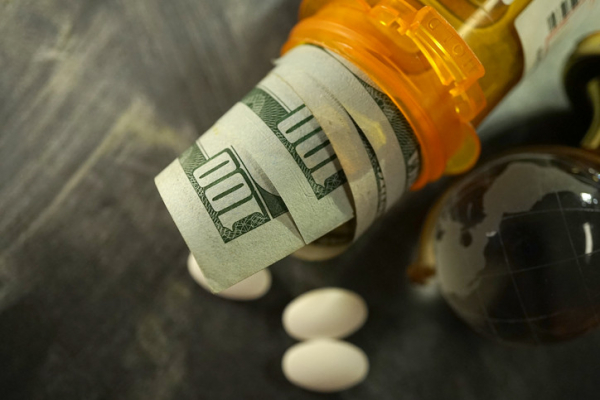
A fresh look at risks for developing young-onset dementia

Dementia usually develops in people ages 65 years and older. So-called young-onset dementia, occurring in those younger than age 65, is uncommon. Now, a new study published in December 2023 in JAMA Neurology has identified 15 factors linked to a higher risk of young-onset dementia.
Let’s see what they found, and — most importantly — what you can do to reduce your own risks.
Are early dementia and young-onset dementia the same?
No. Experts think of early dementia as the first stage in dementia. Mild cognitive impairment and mild dementia are forms of early dementia. So, someone age 50, 65, or 88 could have early dementia.
Young-onset dementia refers to the age at which dementia is diagnosed. A person has young-onset dementia if symptoms and diagnosis occur before age 65.
What has previous research shown?
A previous study of men in Sweden identified some risk factors for young-onset dementia, including high blood pressure, stroke, depression, alcohol use disorder, vitamin D deficiency, drug use disorder, and overall cognitive function.
What to know about the new study
In the new study, a research team in the Netherlands and the United Kingdom looked at data from the UK Biobank. The biobank follows about half a million individuals in the United Kingdom who were 37 to 73 years old when they first joined the project between 2006 and 2010. Most participants identified as white (89%), and the remaining 11% were described only as “other.” Slightly more than half of the participants (54%) were women.
The researchers excluded anyone age 65 or older and people who already had dementia at the start of the study, leaving 356,052 participants for the analyses. Over roughly a decade, 485 participants developed young-onset dementia. The researchers compared participants who did and did not develop young-onset dementia to identify possible risk factors.
What did the researchers learn about risks for young-onset dementia?
In reviewing the results, I think it is helpful to group the risk factors into several categories, and then to examine each of them. These risks may act on the brain directly or indirectly.
Eight factors that we know or strongly suspect cause dementia:
- Genes: Carrying two apolipoprotein E (APOE) ε4 alleles is a major genetic risk factor for Alzheimer’s disease. The risk is thought to be caused by the APOE ε4 protein not clearing amyloid efficiently from the brain. This allows amyloid to accumulate and cause plaques, which starts the cascade to cell death and Alzheimer’s disease.
- Being diagnosed with alcohol use disorder (AUD) has been associated with damage to several parts of the brain, including the frontal lobes, which leads to trouble with executive function and working memory. When combined with poor nutrition, AUD also harms small regions connected to the hippocampus that are critical for forming new memories.
- Being socially isolated is a major risk factor for dementia. Although the exact mechanism is unknown, it may be because our brains evolved, in large part, for social interactions. Individuals with fewer social contacts have fewer social interactions, and simply don’t use their brains enough to keep them healthy.
- Not getting enough vitamin D can lead to more viral infections. A number of studies suggest that certain viral infections increase your risk of dementia.
- Not hearing well increases your risk for dementia, as I discussed in a prior post. This is likely because of reduced brain stimulation and reduced social interactions. Using hearing aids lessens that risk.
- Previously having had a stroke is a risk factor because strokes damage the brain directly, which can lead to vascular dementia.
- Having heart disease is a major risk factor for strokes, which can then lead to vascular dementia.
- Having diabetes if you’re a man can lead to dementia in many different ways. Why only if you’re a man? The researchers suggest that it is because middle-aged men are more likely to have a diabetes-related ministrokes than middle-aged women, which can, again, lead to vascular dementia.
Two factors that reduce cognitive reserve
Cognitive reserve can be described as our capacity to think, improvise, and problem-solve even as our brains change with age. These two risk factors make it more likely that dementia symptoms will show up at a younger age.
- Having less formal education may affect your familiarity with the items on the pencil-and-paper cognitive tests that are used to diagnose dementia.
- Having lower socioeconomic status may be related to lower-quality education.
Is every factor identified in the study a clear risk?
No, and here’s why not: Sometimes research turns up apparent risk factors that might be due to reverse causation. It’s possible, for example, that symptoms of impending dementia appear to be risk factors because they become noticeable before obvious dementia is diagnosed.
- Lower handgrip strength is a sign of frailty, which is often associated with dementia.
- No alcohol use is a risk factor because people may stop drinking when they develop memory loss (also known as the “healthy drinker effect” in dementia).
- Depression is a risk factor because many people get sad when they have trouble remembering or when they are worried about having dementia.
Lastly, there are risk factors that could be either a contributing cause or a result of the impending dementia.
- High C-reactive protein is a sign of inflammation.
- Orthostatic hypotension is an abnormal drop in blood pressure when a person stands up after lying down or sitting. While this condition can lead to brain damage and dementia, it can also be a result of some types of dementia, such as Parkinson’s disease dementia and dementia with Lewy bodies.
What can you do to prevent young-onset dementia?
Taking these five steps can reduce your risk for developing dementia before age 65:
- Don’t drink alcohol in excess.
- Seek opportunities to socialize with others regularly.
- Make sure that you’re getting enough vitamin D. You can make your own vitamin D if your skin (without sunblock) is exposed to sunlight. But in northern climates you might need to take a supplement, especially in the winter. Because vitamin D can interact with other medications, ask your doctor about this option.
- Make sure you are hearing well and use hearing aids if you are not.
- Exercise regularly, eat a healthy diet, maintain a healthy body weight, and work with your doctor to reduce your risk of strokes, heart disease, and diabetes.
About the Author

Andrew E. Budson, MD, Contributor; Editorial Advisory Board Member, Harvard Health Publishing
Dr. Andrew E. Budson is chief of cognitive & behavioral neurology at the Veterans Affairs Boston Healthcare System, lecturer in neurology at Harvard Medical School, and chair of the Science of Learning Innovation Group at the … See Full Bio View all posts by Andrew E. Budson, MD

Why do your prescription drugs cost so much?

I was in line at a pharmacy recently as the customer ahead of me was picking up her prescription. The pharmacist matter-of-factly said: “that’ll be $850.” All she could say was “really?” She left without her prescription, telling the pharmacist she’d have to call her doctor about a less costly alternative.
Many of us routinely experience sticker shock over drug costs. And ever more dramatic examples suggest there’s no limit. So, let’s talk about ways to minimize what we spend on prescription drugs; how we got to this juncture where some medicines cost more than a million dollars per dose; and what changes are needed in our pricey medication-industrial-complex.
7 ways to minimize your spending on prescription drugs
Consider these seven strategies to pare drug costs. Savings will vary depending on insurance, donut holes, deductibles, and cost-sharing.
- Ask your healthcare provider three questions: Is every medicine you take truly necessary? Is it safe to reduce the dose of any medicines you take? Could a lower-cost or generic drug be substituted?
- If you have health insurance, check the list of preferred medications (the formulary), which tend to cost less than other similar medicines.
- Split pills: In some cases, a prescription will cost less if each pill contains more than your needed dose and can be divided. For example, if you usually take a 25-mg pill, taking half of a 50-mg pill may help you save on drug costs and copays. Ask your pharmacist if the math works for you.
- Ask if a 90-day supply rather than a 30-day supply would reduce copays.
- Look for prescription drug discount programs that offer savings. Restrictions apply and availability varies by location. Also, paying through a discount program might not count toward your insurance deductible or maximum out-of-pocket costs, so it isn’t always less expensive to use these programs.
- Compare prices at different pharmacies and review your options with a pharmacist. Sometimes the price is lower if you don’t use your insurance.
- Consider using an online mail-order service (such as Blink Health or Cost Plus Drug Company). However, spending through these sites may not count toward your insurance deductible. And the prices are not always lower online.
These measures will help some people more than others and can take up a lot of time. The sad truth is that even if you did everything you could, the impact on your wallet might be small.
Why are medicine costs so high in the US?
My top five contenders are:
Drug makers’ profit motive. Pharmaceutical companies routinely reject this idea. They say it’s expensive to develop new drugs and run the required clinical trials to prove safety and effectiveness. Many promising drugs fail, and the FDA drug approval process is difficult and costly.
Yet one recent study published in JAMA Network Open found no connection between how much a drug company spends on research and development (R&D) for a drug and the drug’s price. Even after accounting for R&D spending, most of the top 30 pharmaceutical companies make billions of dollars in profit. And in Europe, where drug prices are negotiated, the very same drugs made by the same companies for the same health problems typically cost far less than in the US.
Pharmacy benefit managers (PBMs) handle drug benefits for large employers, Medicare, and health insurance companies. PBMs negotiate prices with health insurers and pharmacies. They help decide which drugs to cover and how much patients pay. Their fees and incentives — often a share of total spending on medicines, which might encourage approval of higher-priced drugs — contribute to the costs health consumers wind up paying. A flurry of state and federal legislation is intended to limit what PBMs can do and the transparency of their operations.
Cost-sharing. In recent years, insurers have increasingly shifted costs to patients through higher copays, deductibles, and premiums. Sometimes this is justified by the notion that this incentivizes patients to seek care only when truly necessary; of course, it could also discourage people from seeking care even when warranted.
Legal maneuvers. Many drug makers file numerous patents and sue potential competitors to extend their time holding a monopoly on a particular drug (see example). Or they create “me too” drugs by slightly tweaking an existing drug so they can patent it as a brand-new drug. Some pharmaceutical companies acquire patents for older drugs and then jack up the price. Others have bought or merged with another drugmaker to avoid price competition.
Direct-to-consumer advertising. Drug companies spend billions on ads (nearly $8.1 billion in 2022). Marketing costs raise the price of drugs while boosting demand for newer, heavily promoted drugs. Advertised drugs tend to be far more expensive (and not always better) than older drugs. Perhaps this is why such advertising is banned in most other countries.
What might slow rising drug costs?
Although prescription drug prices are likely to remain high for the foreseeable future, three developments could help slow rising drug prices in the coming years:
- The Inflation Reduction Act of 2022 allows the US government to negotiate drug prices for Medicare, which is expected to lower drug costs. The first 10 price-protected drugs — including the blood thinner apixaban (Eliquis) and the diabetes medicine sitagliptin (Januvia) — take effect in 2026. More drugs will be added to this list each year. If you’re on one of these drugs, the impact could be large. But with more than 20,000 approved drugs on the market, it’s not a solution that will help everyone.
- Recent FDA action allowing Florida to import drugs from Canada, and other proposed federal and state legislation aiming to protect people from high prescription drug prices.
- Organizations advocating for lower prescription drug prices, including AARP, Consumers Union, and Patients for Affordable Drugs, appear to have the attention of lawmakers as never before.
The bottom line
Let’s face it: our complex, broken healthcare system incentivizes those who develop and distribute drugs to set the prices well above what many can afford. And the amount you can chip away on your own is limited. What we really need is an overhaul to remove middlemen who contribute to added cost without always adding value.
Until we get there, do what you can, even if the impact is small. Trying your best to stay healthy could be the most important step you take. After all, the best way to limit how much you spend on prescription drugs is to have no reason to take them.
About the Author

Robert H. Shmerling, MD, Senior Faculty Editor, Harvard Health Publishing; Editorial Advisory Board Member, Harvard Health Publishing
Dr. Robert H. Shmerling is the former clinical chief of the division of rheumatology at Beth Israel Deaconess Medical Center (BIDMC), and is a current member of the corresponding faculty in medicine at Harvard Medical School. … See Full Bio View all posts by Robert H. Shmerling, MD